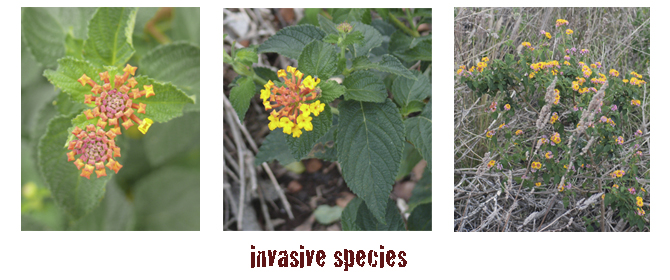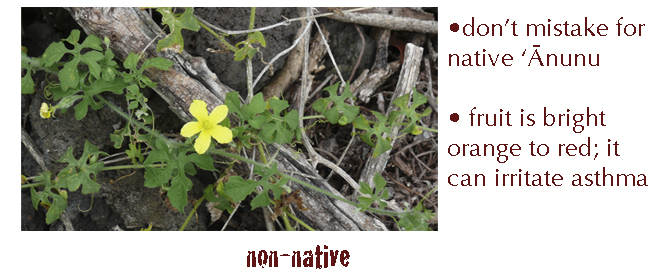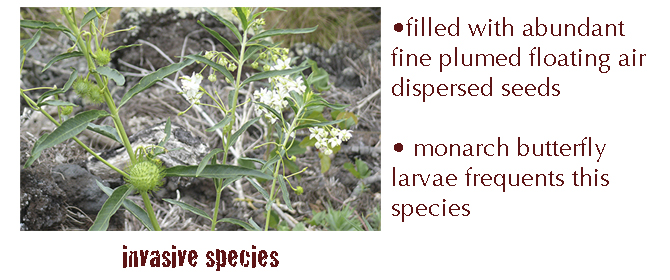Many volunteers help pull non-native plants that don’t belong in the dry forest, to help restore the native species. So its important to learn the difference between native plants to keep alive and well, from those that belong somewhere else in the world, but NOT in Hawaii’s native forests. Not all non-native species are considered invasive. Some might grow without having much impact on the native plants, but others grow aggressively, crowd out the natives, compete for their food, water and resources, and dramatically change the community of plants. When non-native plants win all these competitions for light, space, food and water, the native plants die. These aggressive non-native plants are referred to as “invasive species”.
In the last lesson you learned about the native vines to keep in the forest, and how to notice their shape and color. In this lesson you will learn about three invasive species that are frequently removed from dry forests to help native plants grow. Following are three invasive plants that can be found in forests of the Kekaha region of Hawai’i island—BUT DON’T BELONG THERE. They are shown again in the quiz at the bottom to see if you can recognize them without their names. But first, take a close look at each. Notice the shape. Notice the leaf veins. Notice the color. Notice any flowers. Notice any seeds.

Lantana is a thorny, invasive bush that volunteers pull only when it is a young plant before the thorns grow large. It is always done wearing gloves, with hands right at the ground to pull out roots and all. When as large as the bush shown on the right, more is required for its removal. The flowers have a distinctive strong smell.

Bitter gourd is removed from the forest as a non-native, though it does have a history of use for food and medicine. Here it competes with the other native plants. Don’t mistake this for ʻĀnunu, as some do at first. If you don’t know for sure, no shame, just ask someone who does. If you have asthma, stay away from this plant—especially its ripe brilliant orange-red fruit.

Balloon plant spreads quickly once it matures to produce seeds. Within the ball pods are hundreds of fine feathery seeds that are easily airborne to spread further downwind. It is best to pull this plant out by the roots before the seedpods mature so they don’t multiply and quickly spread. Be sure to wear gloves as with all weeding. This is a milkweed that exudes milky latex. It is also favored as a food source by the larvae of monarch butterflies, so better to pull them before cocoon season.
See how well you can remember these plants without their names; it will help you once you are in the forest: Quiz 3
